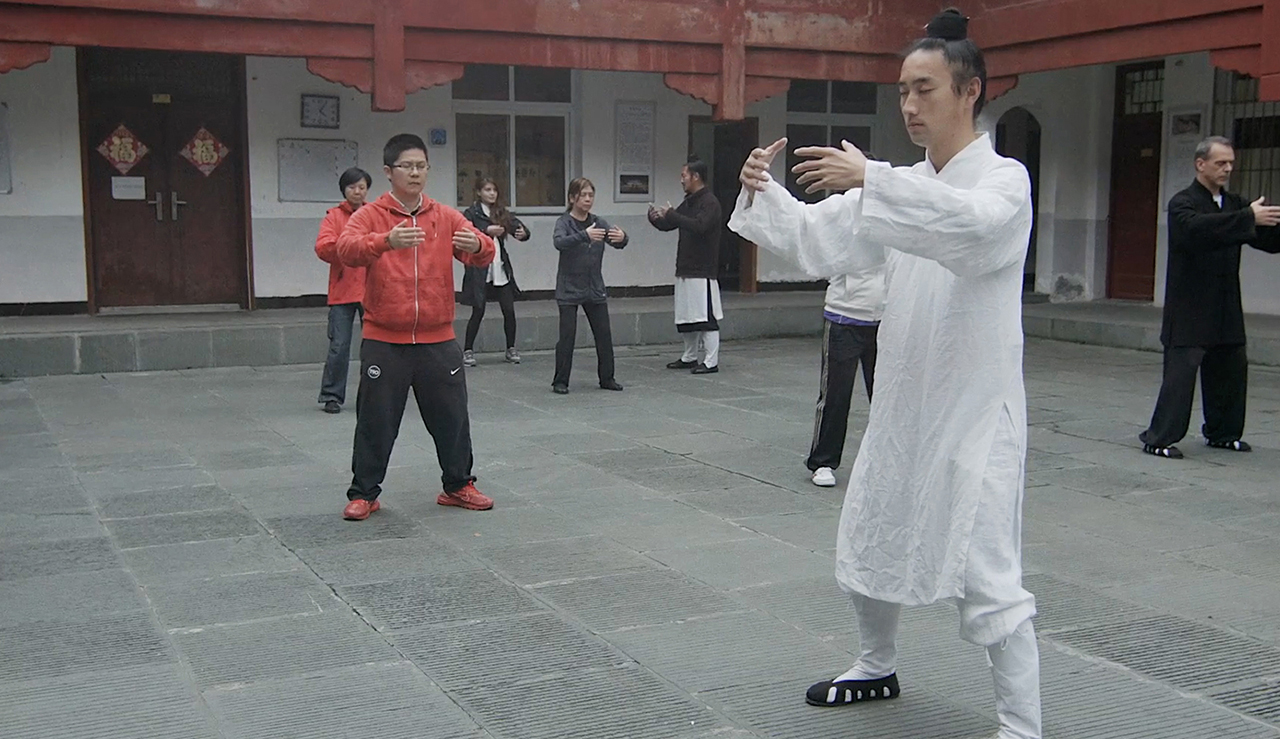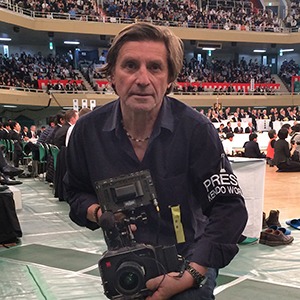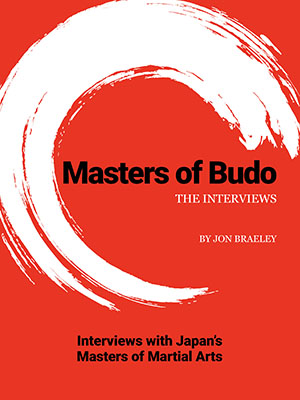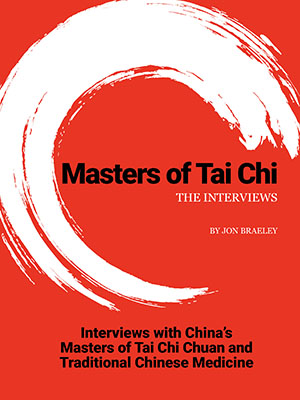Introduction
Yiquan can be translated as intent boxing or more literally, mind fist (boxing). My first introduction to this relatively unknown Chinese fighting art was in 2003 during a visit to Beijing. I was meeting a group of martial arts practitioners in Ritan Park to watch and film a demonstration of forms and weapons. One of the more advanced students performed a Bagua Zhang form and afterward we spoke. He told me that recently he had started training in Yiquan and this was a natural progression for his Kung Fu. After talking for ten minutes, I made a note to visit the Yiquan school he told me about and the teacher, Master Master Cui Ruibin, which I did four years later.
Photo above: At the entrance to the school: Director Jon Braeley between master Cui Ruibin (on the left) and assistant Gong Dong (far right)
Below is part of a paper that I wrote on this visit to see Master Cui Ruibin. Our Yiquan paper was written after a request by the German research institute – Europäische Akademie für bio-psycho-soziale Gesundheit, Naturtherapien und Kreativitätsförderung – EAG. This institute has a department researching history, culture and clinical therapy / psychotherapy of martial arts, run by Frank Siegele + Dr. Hermann Ludwig and coordinated by Alexander Ewald.
History
Yiquan is a relative newcomer to Chinese martial arts being developed around one hundred years ago by a well known martial arts master, Wang Xiangzhai. Yiquan was created on the heels of the three main internal styles of Xingyiquan, Baguazhang and Tai Chi Chuan. Wang Xiangzhai was a weak boy, prone to illness, and the parents did what so many parents do in China, they sought the help of a local Kungfu master. In this case, Guo Yunsheng, a Xingyi master, who quickly set about training the young Wang Xiangzhai.
By the early 1920’s, Wang Xiangzhai, was an experienced Xingyi exponent and one of Beijing’s leading martial arts masters. To sharpen his martial arts skills even further, he left Beijing to travel around China, training in both hard and soft styles of martial arts. In 1925 when Wang Xiangzhai was still teaching Xingyi, he began to focus his training on Zhan Zhuang, the standing meditation taught to him by Guo Yunsheng. With the emphasis shifted toward developing the mind, Wang Xiangzhai discarded the ‘Xing’ or more formal Xingyi techniques and decided to call his style, Yi Quan or Mind Fist.

Yiquan founder Wang Xiangzhai (left) and Yao Zongxun, Cui Ruibin’s teacher
Wang Xiangzhai had developed a martial art that did not follow the set patterns or rules of the more orthodox internal styles of Kungfu. It was the modern day equivalent to Bruce Lee breaking away from traditional styles to create Jeet Kun Do. In creating Yiquan, Master Wang sought to find the correct balance between the health benefits and the combat aspects of a martial art. Even more subtly, he sought to find the correct balance of the mind and the body. Indeed Master Wang went much further in concluding that the mind and body acted as one and as such, it’s importance in Yiquan cannot be stressed enough. In this endevour, he made a practice he knew very well from Xingyiquan, Zhan Zhuang, or “standing pole,” the cornerstone of his new style.
No study of Yiquan can be made without first exploring the practice of Zhan Zhuang across the broad disciplines of Chinese internal martial arts. In particular, Zhan Zhuang can be found prominently in Tai Chi Chuan and in its health form, as the foundation of Gigong practice. While opinions vary as to why Zhan Zhuang is given so much importance in Chinese martial arts, most exponents agree it is to develop Chi or intrinsic power, also known as internal energy. Some sceptics believe however that Zhan Zhuang has no clear benefit in the fighting arts or combat.

Tai Chi school on Wudang Mountain in Zhan Zhuang
The Zhan Zhuang that Master Wang developed was not simply a replica of his training in Xingyiquan. In the development of Yiquan, Wang Xiangzhai made a breakthrough that came to differentiate his standing still posture. In this case that the practice of Zhan Zhuang leads to mindfulness and the control of the thought process. This ability is the mental discipline to channel one’s qi into ‘intention’ from standing motionless and thereby into action. This is the “Yi” or ‘thought’. Here we can see that Master Wang’s Zhan Zhuang is more than standing meditation in the traditional style.
One of Wang Xiangzhai’s top students, Yao Zongxun is acknowledged as his formal successor and the first to create standardized training methods for teaching Yiquan. This systematic approach helped to introduce Yiquan to a worldwide audience of eager students.

Master Cui Ruibin
The Beijing International Yiquan Training Centre is located in Tao-Lin village on the edge of Xingshou town in the Changping district about twenty five miles north of Beijing.
I traveled to see Master Cui Ruibin with my Chinese assistant Betty Yuan in November 2007. On an average day it is about a one hour drive from the center of Beijing to Tao-Lin village. Driving north, you go past the Olympic Stadium or Bird’s Nest Stadium as it is now known. Once you escape the city, which in Beijing’s case means outside the 5th ring road, you are in the countryside.
After the 5th ring road my taxi cab took a further twenty minutes driving through the quiet countryside of flat farmland. The trees were bare of leaves and like gray matchsticks. The farmland was dry earth colors. The few buildings in the landscape were concrete. It looked very bleak.
I knew a little about Cui Ruibin’s personal history and as we drove through Changping district, I thought about his teacher, Master Yao Zongxun who was relocated to the Changping district in the mid-sixties as part of the ‘Send Down’ policy. This was the forced migration of young adults from the urban areas to the countryside during the Cultural Revolution which took place between 1966 and 1976.

As I looked through the car window I shuddered at how cold and forlorn this countryside must have been during the days of the Cultural Revolution. When Cui Ruibin began training with Yao Zongxun in 1972, martial arts were prohibited in China and Cui Ruibin had to visit his teacher in secret not far from Xingshou town. Conditions in the countryside in this period were poor without any of the advantages a city can give you such as healthcare, education and employment. China’s ruler, Mao Zedong defended the policy, claiming that: “the countryside is a vast expanse of heaven and earth where we can flourish.” Obviously he never came to this area I thought as we entered the small village of Tao Lin.
The school, located on the edge of the village, is entered through a large set of red doors in a tall perimeter red brick wall. Our taxi driver, who had been told to wait, went to find somewhere to eat. I knew from experience that when visiting the Chinese countryside you make sure your driver waits for you, even if it means waiting all day.

Morning Yiquan practice in the training courtyard
We walked through the open entrance doors into a large clay covered courtyard about the size of two tennis courts. Single story buildings lined three sides with a high brick wall on the opposite side. It could have been a school at some I thought. No one was around but I was relieved to see painted murals on the wall depicting martial arts practitioners. We were in the right place I thought to myself. I saw a six metre diameter circle of paved bricks in the middle of the courtyard floor and guessed correctly this is where the sparring of Ti Shou (pushing hands) takes place.
A circular arched opening led to another courtyard so Betty and I kept walking. This second smaller courtyard held training apparatus such as punch bags and weights. Not something you normally associate with an internal martial art style, I thought to myself. I could see lights through the windows of a building and people sitting at a desk and we walked over.
Master Cui Ruibin stood up to greet us as we entered the office building. It was warm inside and cigarette smoke was thick in the air. Smoking was something I had gotten used to in China, even at martial arts schools. We were soon sitting across from Master Cui and drinking hot black tea. He was broad shouldered and about six feet in height. I looked around the room as Betty chatted to Master Rui about our ride from Beijing. I recognized two small silver gray photos of Wang Xiangzhai and Master Yao Zongxun hanging on the wall.
It was cold outside with little hope of the sun making an appearance, so we decided to start the interview in the office with Cui Ruibin and later, conduct a second interview outside during class practice. Read more: The Yiquan Paper: Interview







